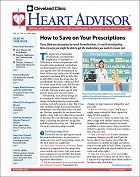Blockage in one of your coronary arteries, the vital pipelines that provide blood to your heart, can lead to chest pain or worse, a heart attack, if the blockage is so severe that blood flow actually fails to supply the organ tissue. For many years, blocked arteries were treated with bypass surgery, in which the chest was opened up and a blood vessel from elsewhere in the body was used to redirect circulation around the obstruction. Then stents were developed and doctors were able to insert flexible tubes into arteries to open them up without surgery. So if one or more of your coronary arteries is becoming blocked, what is the best course of action? First, its important to understand the degree of blockage that would warrant some type of intervention. "Blockages considered severe enough to stent or bypass are defined as narrowings of 70 percent or more in one of the three major coronary vessels: left anterior descending artery (LAD), right coronary artery (RCA), or circumflex artery (CIRC) or 50 percent or more in the left main trunk (LMT)," explains Cleveland Clinic cardiologist Adam Grasso, MD. "This is the threshold at which the narrowing tends to be hemodynamically significant-flow-limiting under conditions of stress, such as physical exertion."
To continue reading this article or issue you must be a paid subscriber.
Sign in






